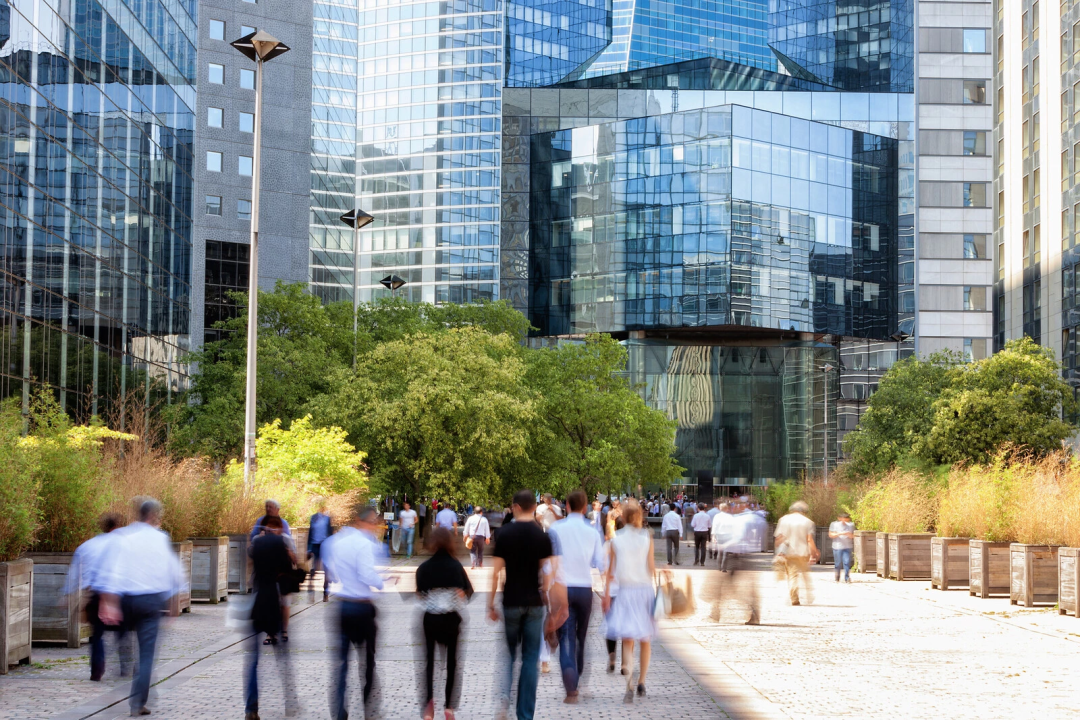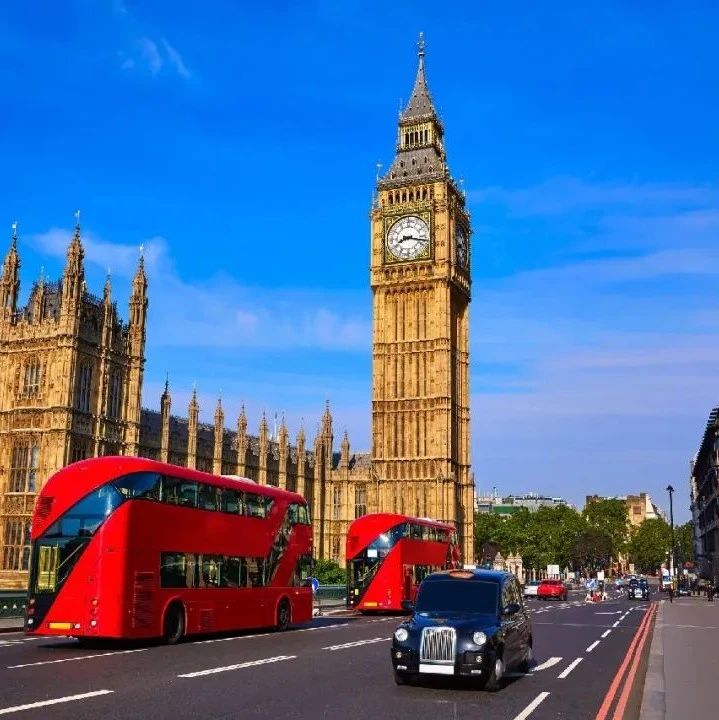Systems thinking can be applied to urban transportation to promote public and active mobility.
Image source:Getty Images/iStockphoto
Audrey de Nazelle
Senior Lecturer at the Imperial College London Centre for Environmental Policy
Nicole Cowell
Postdoctoral Research Associate, Centre for Environmental Policy, Imperial College London
World Economic Forum Clean Air Hoffman Scholar
Reliance on cars poses a global urban challenge, requiring cultural shifts to implement solutions aimed at reducing the number of vehicles on the road.
Systems thinking can be applied to urban transportation to promote public and active mobility, improve air quality, and address the climate crisis.
Promoting the numerous benefits of reducing car usage can encourage active public participation and drive the transformation of urban transportation systems.
Globally, 70% of greenhouse gas emissions come from cities. Emissions from the transportation sector remain stubbornly high, largely due to the growing demand for car travel and the increasing size of vehicles. Meanwhile, urban areas continue to expand rapidly, with projections indicating that by 2050, 70% of the global population will live in urban centers.Every year, 6.7 million people die due to air pollution. As urban populations grow, concentrations of nitrogen dioxide are also on the rise. In many cities, traffic is the primary contributor to air pollution. Even with vehicle electrification, cars still emit non-exhaust particulate matter.Some climate and air pollution measures have inadvertently reinforced our reliance on cars, causing us to miss out on opportunities to improve health and enhance urban quality of life. We need to strengthen collaboration and adopt systems thinking to effectively drive the transformation of urban transportation—unlocking multiple benefits for our city environments.The benefits of reducing the number of cars in citiesReorganizing urban transportation and promoting a reduction in the number of cars will benefit the entire city system. The current car-centric transportation system not only emits air pollutants but also negatively impacts our physical and mental health, exacerbates social challenges, damages the environment, and contributes to climate change. Here are five key reasons why we should reduce car usage:1. Reducing car travel can help improve residents' levels of physical activity.Cycling or walking allows people to seamlessly integrate physical activity into their daily lives. Globally, one-third of the population—particularly those in low-income groups and marginalized communities—are struggling to meet recommended levels of physical activity, making it more important than ever to boost active mobility. Engaging in active transportation not only offers tangible health benefits, such as reducing the risk of cardiovascular diseases and cancer, but also lowers overall mortality rates from all causes.Active transportation can also improve self-reported physical and mental health, boost energy levels, and enhance social interactions. Moreover, engaging in active transportation—especially by consistently participating in sports activities—can generate significant economic benefits.2. Making better use of urban public spacesReducing car usage can encourage a rethinking of how urban spaces currently allocated to vehicles are utilized, ultimately leading to more green spaces in cities. Urban green areas not only enhance people's physical and mental well-being but also offer significant benefits, such as lowering the risk of cardiovascular diseases, preventing low birth weights, improving sleep quality, boosting physical activity levels, and even helping to reduce urban crime rates.Green infrastructure can also reduce heat, prevent flooding and waterlogging, provide food sources, and enhance biodiversity—thereby strengthening climate and health resilience.3. Reduce urban living stress, air pollution, and noiseStreets with lighter traffic flow may be quieter and less stressful. Noise can lead to a range of health issues, including but not limited to sleep disturbances, irritability, cognitive impairments, cardiovascular diseases, and exacerbation of respiratory conditions.Traffic is also a major contributor to urban air pollution, and exposure to polluted air can lead to premature death from cancer, cardiovascular diseases, and respiratory illnesses. Moreover, motorized transportation generates significantly higher stress levels compared to non-motorized options. Research shows that cycling and walking can reduce stress levels by 11% and 6%, respectively, when compared to other modes of travel.4. Reducing preventable deathsAccording to the World Health Organization, traffic accidents are the eighth leading cause of death worldwide—and the primary cause of death among young people aged 5 to 29—resulting in nearly 1.35 million fatalities each year. Yet, these deaths are largely preventable. One contributing factor to accidents is rapid urbanization: as cities continue to expand and people increasingly rely on cars, the number of vehicles on the road rises, directly increasing the risk of both fatal and injury-causing crashes. By rethinking urban planning and transportation infrastructure, it’s possible to significantly reduce the risks of death and injury from traffic accidents.5. Reliance on cars has deepened inequality, disproportionately harming vulnerable groups.Whether due to the risk of traffic accidents—where 93% of road fatalities in 2019 occurred in low- and middle-income countries—or because car-centric transportation infrastructure leads to community segregation, reliance on cars often disproportionately harms vulnerable populations. Inequality is especially pronounced in urban areas, where economically disadvantaged groups are forced to move away from healthy living spaces, thereby increasing their exposure to air pollution.Implementing urban transportation solutionsSo, why haven’t we implemented more effective measures in city centers to reduce the number of cars? And why, despite having ambitious solutions aimed at cutting down urban vehicle traffic, have they fallen short of driving real change?Because these types of solutions often spark controversy or may face political and public opposition, many politicians tend to shy away from potentially divisive issues when powerful interest groups are locked in competitive struggles. Meanwhile, public support is crucial for driving the transportation transition—but surprisingly, there’s limited research on how well the public actually embraces urban mobility policies. We still don’t fully understand how to effectively craft a compelling vision for urban transport transformation and communicate the multiple benefits of strategies aimed at reducing car dependency, in order to rally broader societal engagement.The good news is that multiple lines of evidence support policies aimed at reducing the number of cars, offering numerous potential entry points for boosting social engagement. Positive messaging is particularly effective in encouraging community participation, as reducing car usage would yield significant mutual benefits for both neighborhoods and streets.
However, the bad news is that communicating these multifaceted and complex impacts proves challenging. Misinformation often fuels opposition, shapes public perceptions, triggers unnecessary panic, and ultimately undermines informed policy decisions.To achieve a transformation in urban transportation, we need to mobilize a diverse range of stakeholders, including civil servants from various government departments, politicians, and citizens. Siloed thinking during policy-making has limited the potential for meaningful change; meanwhile, departments often operate independently when pursuing their own goals or implementing policies—failing to fully recognize that cross-departmental systemic reforms could unlock broader, shared benefits for the city as a whole.From a systems perspective, the strategy of reducing the number of cars makes sense. To achieve this transformation, collaboration across all sectors needs to be strengthened. Systems thinking—approaching problems by considering the interconnectedness and interactions within the entire system—can help us fully leverage the synergies and benefits of coordinated actions, while also preventing unintended negative outcomes. This, in turn, provides us with a valuable opportunity to rethink urban transportation strategies altogether.Systemic thinking can also enhance the transparency and inclusivity of the decision-making process, helping to overcome some of the challenges in urban transformation.If we want to make progress in transforming urban transportation, we need to strengthen collaboration in decision-making, foster mutual understanding, and embrace systems thinking. The sooner we address transportation challenges, the sooner we can reap the benefits of cities that are people-centered, livable, and healthy.
The above content solely represents the author's personal views.This article is translated from the World Economic Forum's Agenda blog; the Chinese version is for reference purposes only.Feel free to share this in your WeChat Moments; please leave a comment below if you'd like to republish.
Translated by: Di Chenjing | Edited by: Wang Can
The World Economic Forum is an independent and neutral platform dedicated to bringing together diverse perspectives to discuss critical global, regional, and industry-specific issues.
Follow us on Weibo, WeChat Video Channels, Douyin, and Xiaohongshu!
"World Economic Forum"





